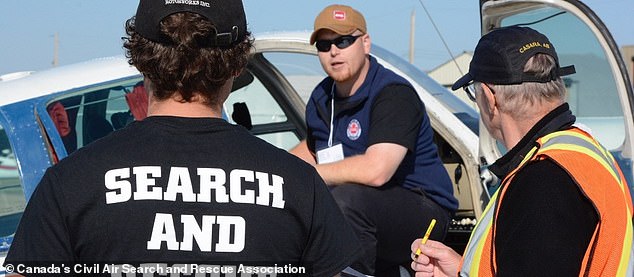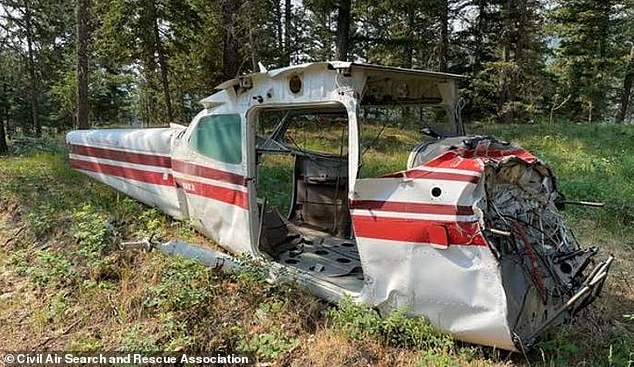The mystery of a plane crash in the Canadian wilderness has been solved after the Canadian Civil Air Search and Rescue Association (Casara) admitted it was there for a training exercise.
The Cessna “carcass” was placed on the mountain last summer so that search and rescue teams could practice and be prepared for any real aircraft disasters.
The plane was towed up the mountain by a logger and placed north of Kamloops at Community Lake.
On November 3, a British Columbia man stumblesd on the damaged aircraft while hunting in the Canadian wilderness and reported the finding to the Royal Canadian Mounted Police (RCMP).
The The mystery of the doomed plane gained momentum when no bodies were found in the fuselage.
The mysterious aircraft used as support by the Canadian Civil Air Search and Rescue Association
According to the Civil Aviation Daily Occurrence Reporting System, little was known about the aircraft other than that it was “destroyed,” probably by “collision with terrain.”
It was listed as a crash on Transport Canada’s Civil Aviation Daily Occurrence Reporting System (CADORS). CBC reported.
Officers were quickly dispatched to the scene where they spotted the mangled plane that had no engine, wings, doors, no seats and, remarkably, no bodies.
According to a police spokesperson, ‘only the torso remained’ and there were ‘no license plate numbers attached to it’ Guardian reported.
The mysterious plane confused police with theories emerging that the crash had more than occurred two decades ago.
But Orvin Walden, a CASARA pilot, said the part of the plane was placed on private property and clearly marked with “CASARA” and phone numbers so it wouldn’t be mistaken as a real crash site.
“We put it there so we could train our spotters and navigators how to find it on the hill,” he said.
Walden said the plane was deliberately placed there, away from normal flight paths, in Kamloops, allowing pilots to practice flying in the area without disrupting other aircraft, the news source said.
“I thought it was far enough away that no one would be up there because it’s on a man’s private woods,” he added.


“We want to make it as real as possible for them: smoke, injured people,” he said. “They love it and we get to treat it like a real crashed plane,” said Fred Carey, director general of British Columbia’s air rescue service.
Fred Carey, Director General of British Columbia Air Rescue Operations, explained the importance of these training exercises.
If a plane crashes in the wilderness, the vast terrain can make the wreckage extremely difficult to locate.
In one tragic incident, a large military transport aircraft with 44 crew members and passengers on board disappeared in the northern Yukon Territory.
The aircraft and crew members were never found, despite a massive search and rescue effort.
To prevent tragic events like this from happening again, Carey explained that search and rescue teams practice on historic wrecks or demolished aircraft.
“We want to make it as real as possible for them: smoke, injured people,” he said.
“They love it and we get to treat it like a real crashed plane.”
During training with the mystery plane, Carey said a team towed the Cessna up a mountainside north of Kamloops using a log skidder. ‘A big job.’
Carey said the local airport and the province’s main rescue coordination center in Victoria had been notified of their training program and claimed the damaged fuselage was never intended to be secret.
“There are signs in the wreckage and there’s even a phone number you can call,” he said.
‘I’m not sure what happened, maybe the placards are worn out. But in this case, it does not appear that the authorities followed protocol.”

